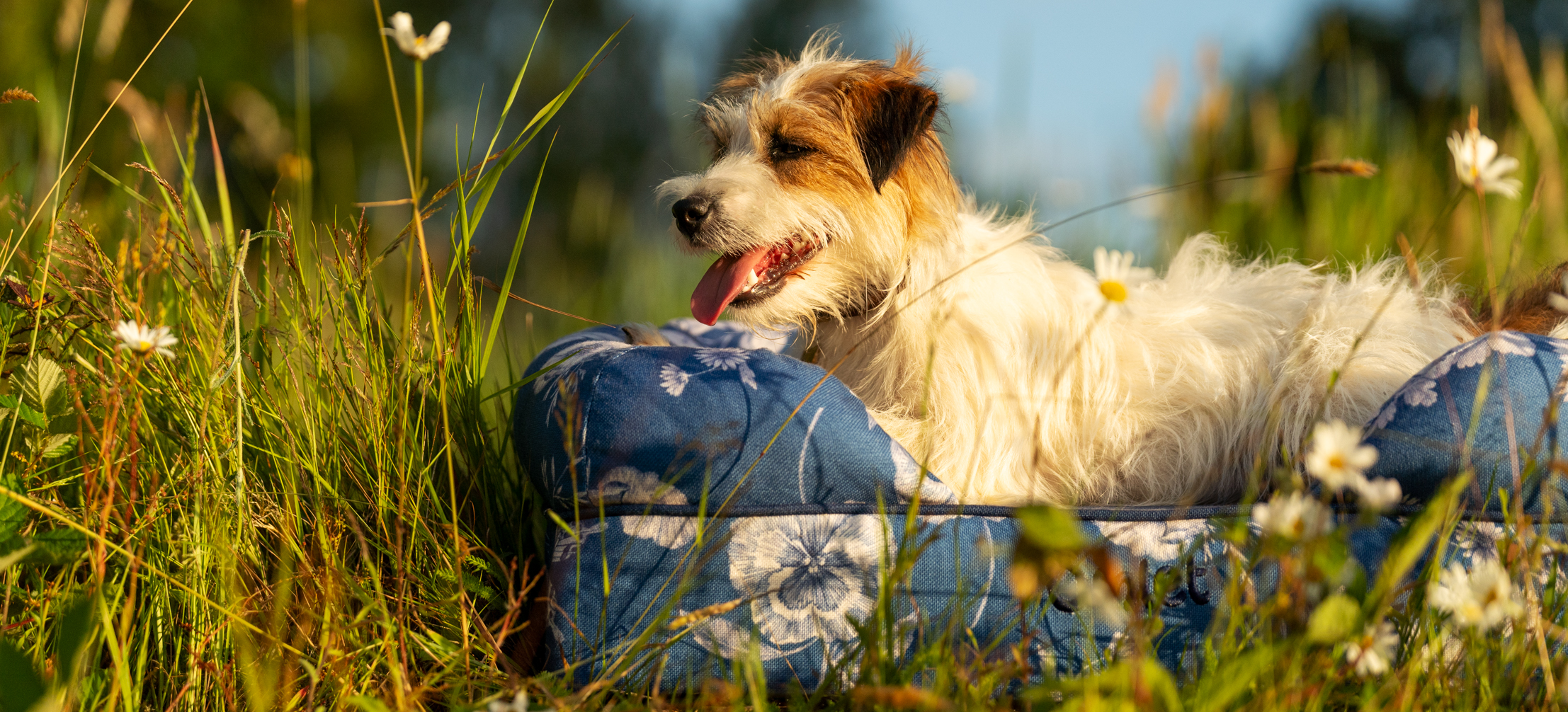Choosing which breed of dog is best for you and your family can sometimes be difficult, but now you’re faced with a slightly easier choice - deciding whether you should get a male or female dog. The differences between male and female dogs can be very apparent, and it’s important that you choose the gender that best suits your family and lifestyle. This guide will go on to explain some key differences between male and female dogs to help you decide which is best for you. Make sure that you don’t choose the gender of your new dog based on availability, otherwise, you might be disappointed.

Terrier sat outside on their Omlet Bolster dog bed in Gardenia Porcelain.
Pros and cons of male dogs
In general, male dogs tend to be larger and can often need more assertive training. They’re considered to be more rounded family dogs and more adaptable to all sorts of situations. But, you should always provide a male dog with an area to exercise that he can’t escape from, particularly when there is a female dog in heat nearby.
- Good with children? - Male can see children more like playmates rather than their children and so can be a little boisterous at times. This varies from breed to breed, however, and some male dogs can also be very loving and protective of children. It’s important to teach your children how to behave around dogs, as well as to train your dog to be relaxed around children to prevent any boundaries from being crossed.
- Temperament - Male dogs are most often more affectionate and thrive on human fuss. They're usually less likely to separate themselves from the attention and will take any bit of love you can give them. It's important to note that breed also plays a big role in a dog’s temperament, so it’s essential to research different dog breeds to make sure you choose one that fits your family and lifestyle.
- Training - The majority of male dogs tend to take a little longer to mature than females. It can also be a little difficult to keep their attention when training them, but if you can work out what pleases your dog you can make training much easier. On the other hand, more male dogs have won dog shows than females so perhaps if you invest time into training them, your dog will prove all the doubters wrong.
Pros and cons of female dogs
Female dogs (bitches) tend to be more responsive to training and are often less prone to wandering off. They’re also better at socializing with other dogs, but be careful when introducing a bitch to a male dog that hasn’t been neutered. The male can be rather boisterous and accidental mating is always a possibility.
- Good with children? - Some people choose a female dog over a male dog if they have children, because it is often thought that female dogs are naturally more gentle with and protective of young ones. Their protective, maternal instincts mean they will come to look upon your young kids as oversized pups, making them a great choice for families.
- Temperament - Generally, female dogs tend to be a little more independent than male dogs and mostly aren’t so demanding of attention. They love a big cuddle as much as any other male dog, but they tend to take themselves away when they want a bit of downtime.
- Training - It has always been said that female dogs are easier to train than male dogs because they're less easily distracted. This might be the case, but if you look at the history of dog show winners, a larger percentage of them are males. You should also note that female dogs are almost untrainable during the times when they're in heat. Your puppy can begin simple dog training at around 8 weeks old, and doing so as early as possible will allow them to grow into confident adult dogs.
Should I get a male or female dog if I already have a male dog?
This is a question that many dog owners are faced with. Dogs of the opposite sex tend to get on better. When male dogs are together they often compete with each other for dominance. This isn’t usually as bad with two female dogs, but they can struggle to settle the decision of who will be top dog.
Ultimately, it depends on each dog’s personality and temperament. If you do decide to get two dogs of the same gender, it’s recommended to introduce a much younger dog into your family than your current one, as a puppy is less likely to intimidate an older dog.
Caring for your dog with Omlet
Regardless of whether you own a male or female dog, Omlet’s range of dog products are engineered to suit the needs of any pet. From comfy dog beds, to dog crates and dog collars, our products are designed to give your dog ultimate comfort and support throughout all stages of their life.





Comments
There are no comments just yet